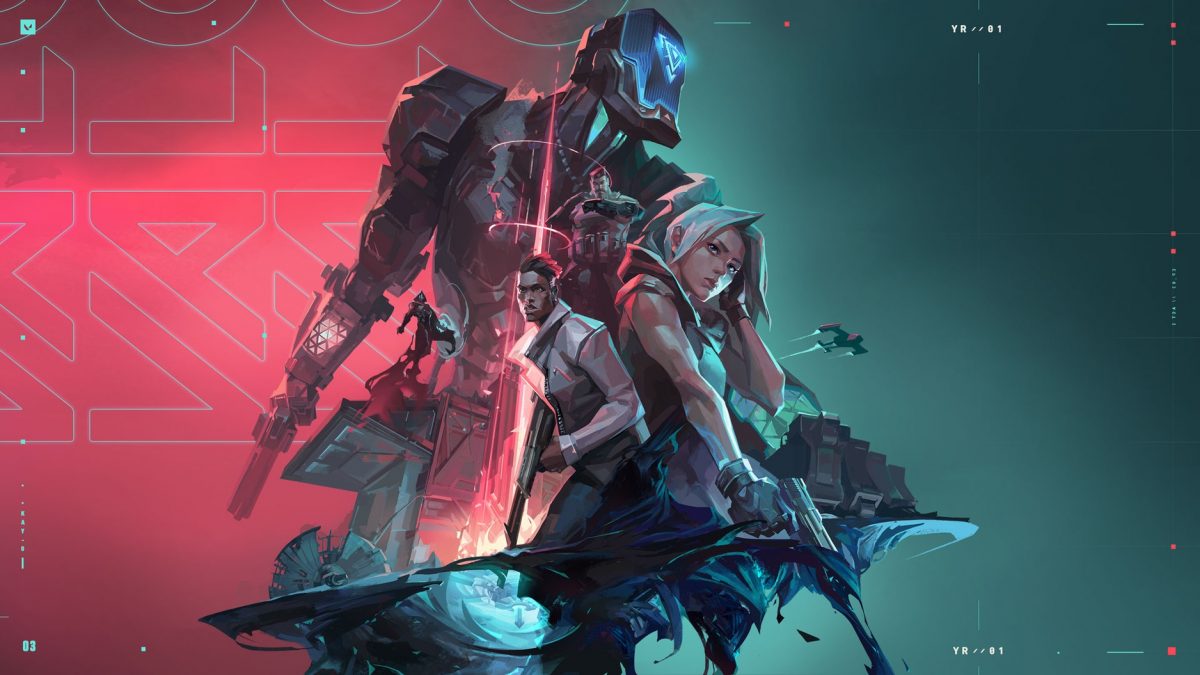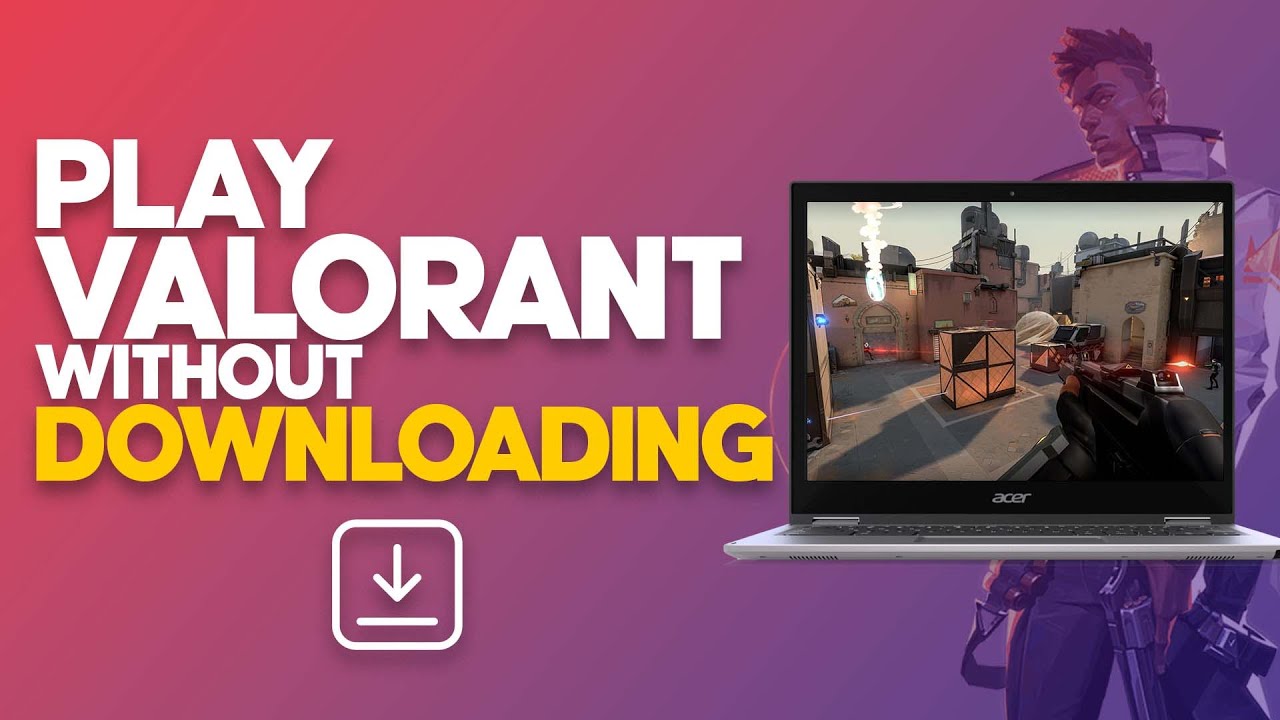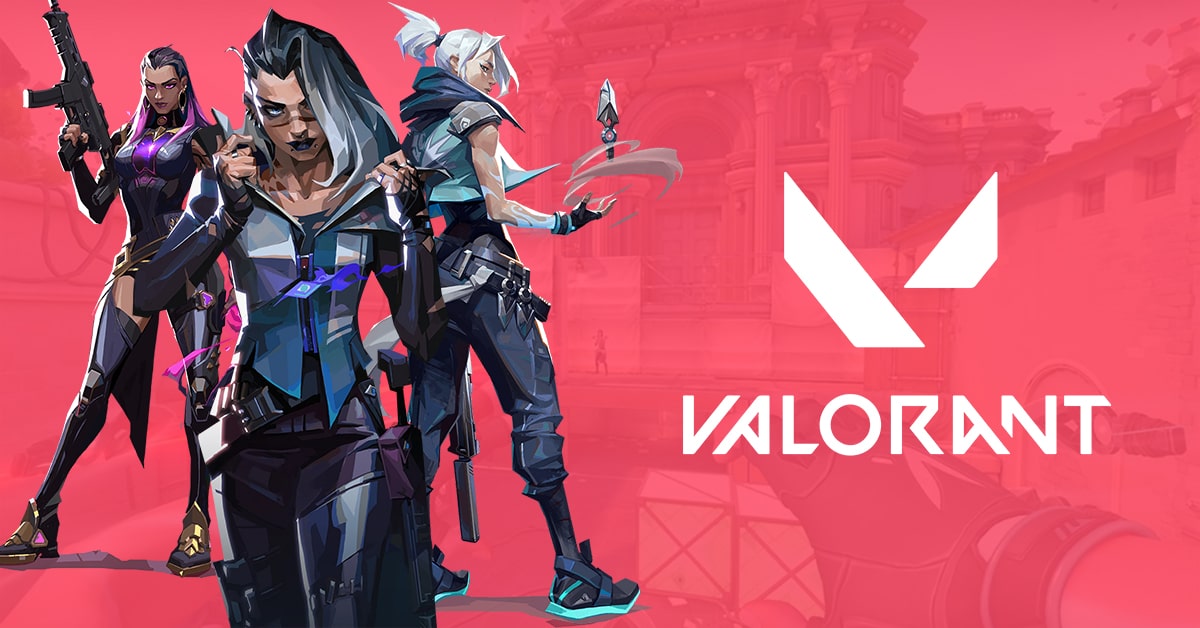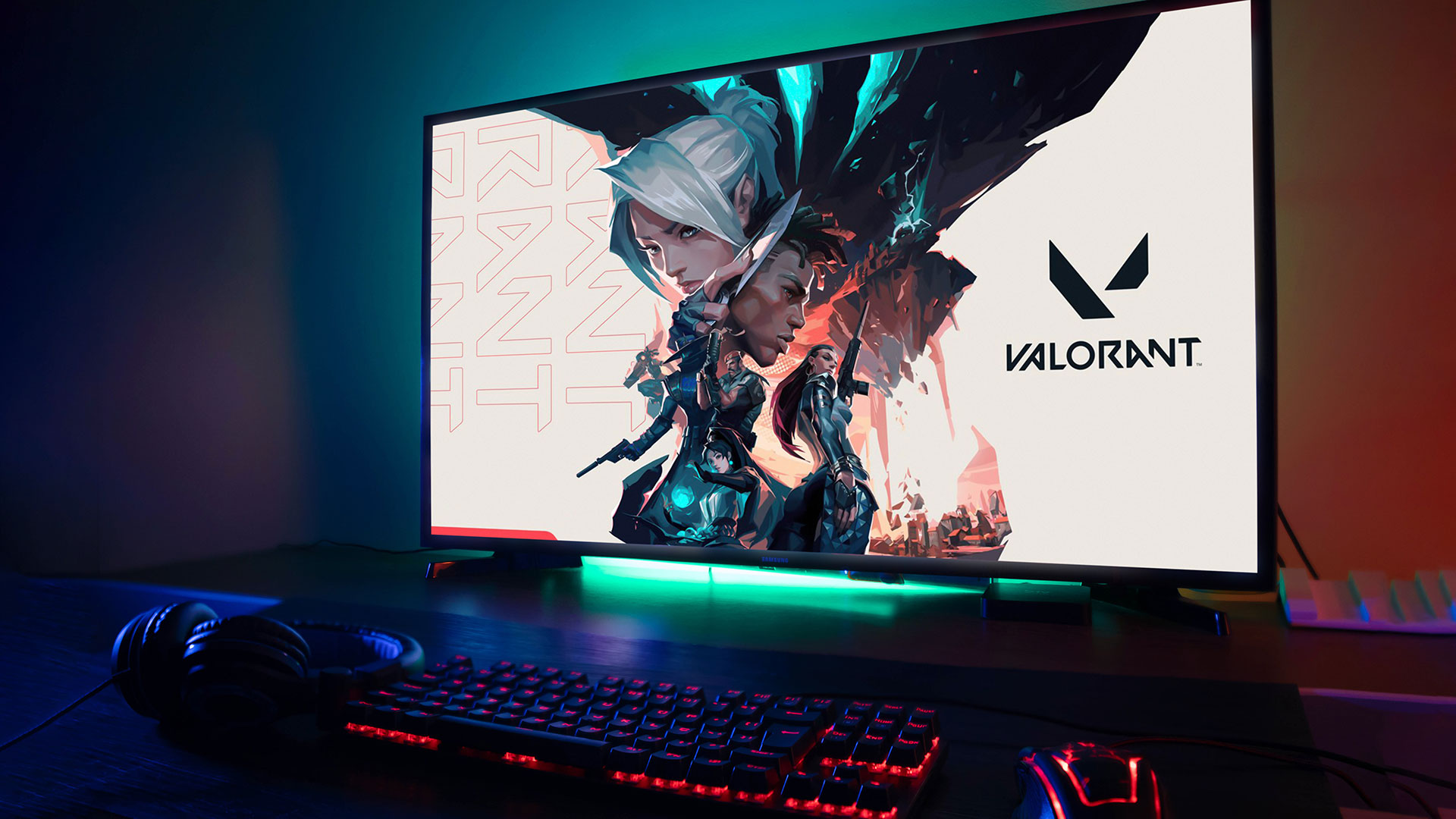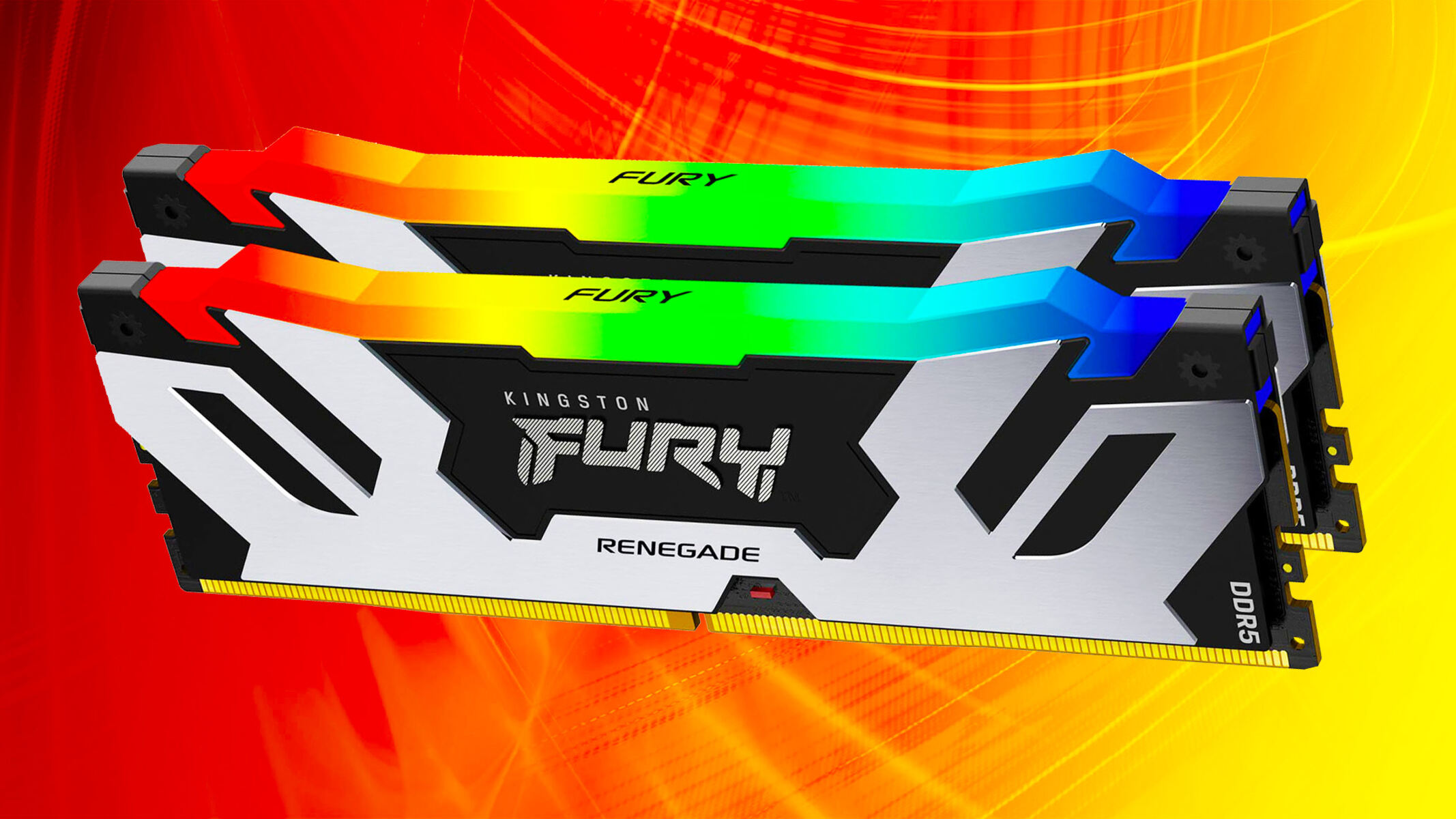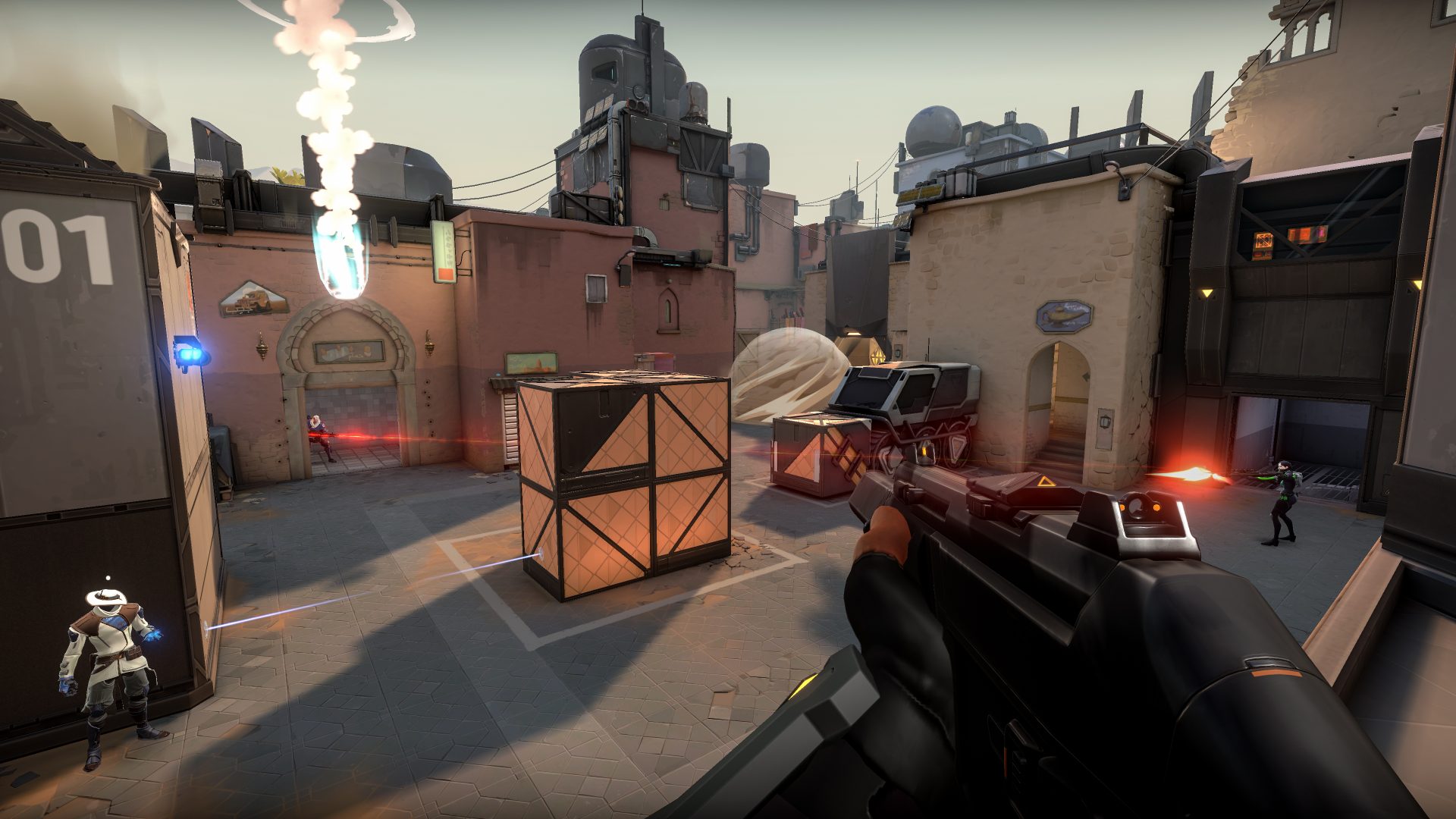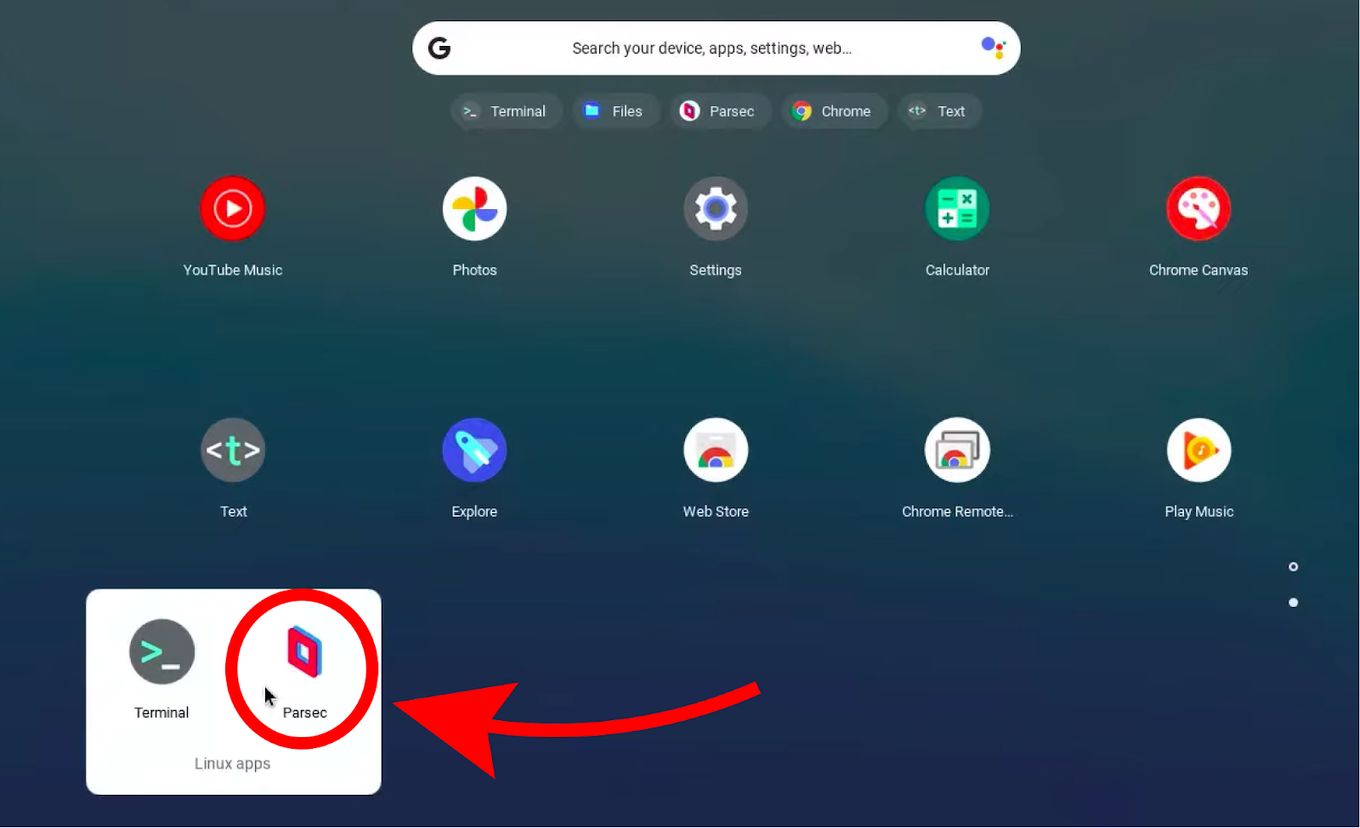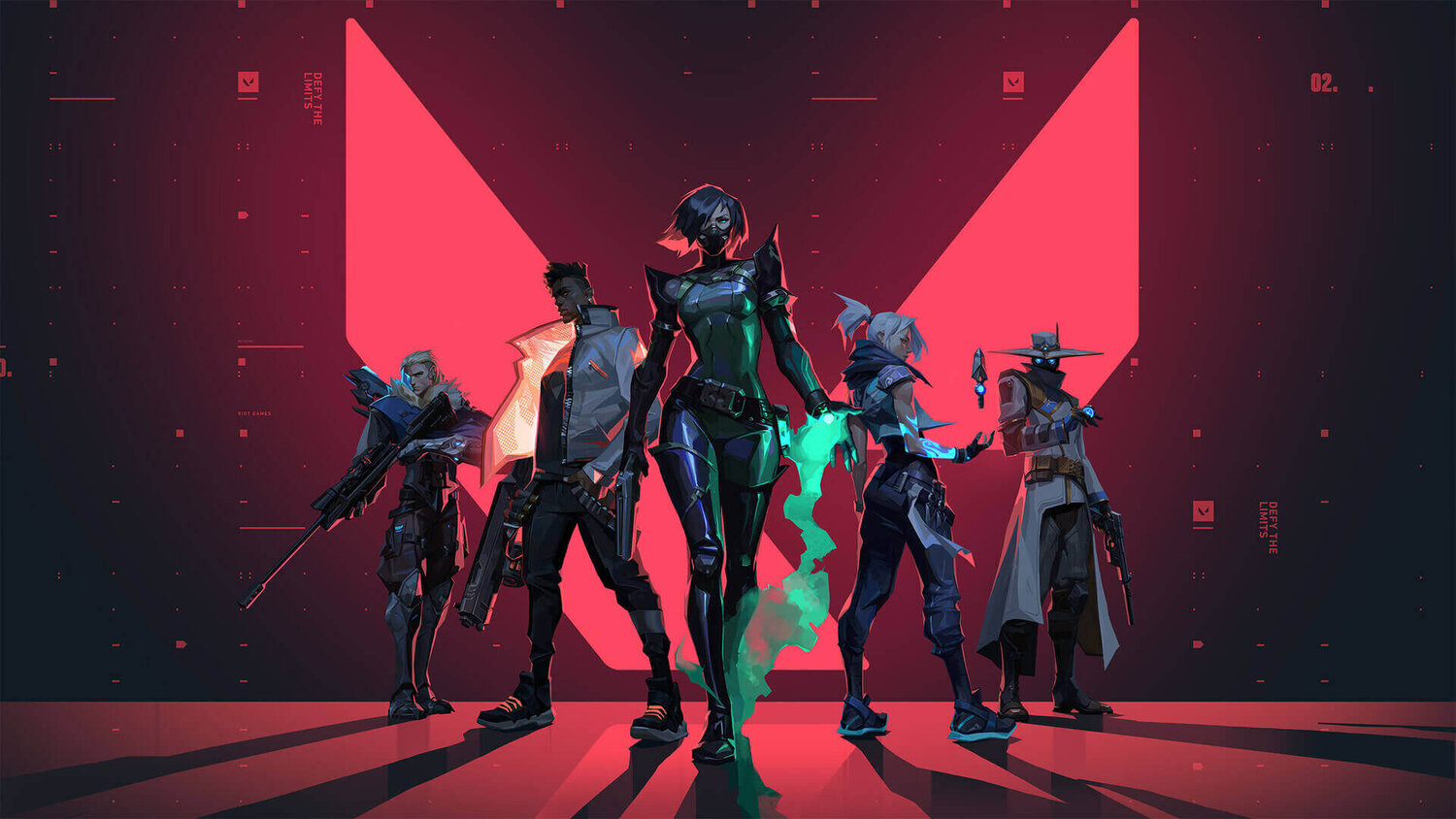First-person shooter (FPS) games are quite common these days. Whether you’re a seasoned gamer or a beginner who’s just getting into gaming, you’ve probably heard of them. The FPS genre dominates the market with its highly competitive gameplay, and one of the FPS games that have taken the world by storm is Valorant. Curious about where to start? Well, you don’t have to worry, because we’ll be walking you through how to play Valorant in this guide for beginners.
What Is Valorant?
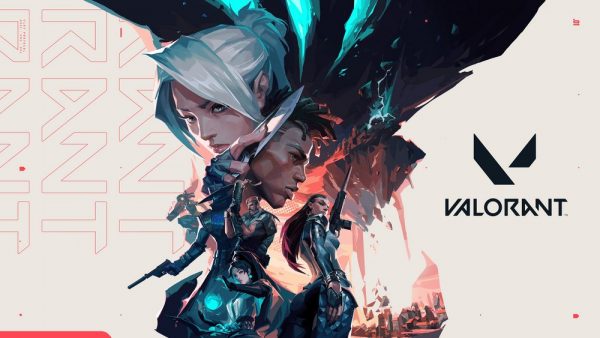

Valorant is a five-versus-five (5v5) competitive shooter game where you get to play as various characters with unique abilities. Unlike FPS games like Apex Legends or Fortnite, the goal of the game isn’t to be the last man or team standing, but to be the first team to win 13 rounds. Similar to CS:GO, both teams are delegated to a side, either the defending side or the attacking side.
If you’re on the attacking side, your objective is either to eliminate the enemy team or to plant an explosive called the spike and wait until it detonates to win the round. Otherwise, your objective on the defending side is to defuse the spike or eliminate the enemy team. Another way for the defending side to win is to buy time for the round to finish.
After 12 rounds, you will change to the opposite side. This means that if you’re on the attacking side in the first half, you’ll be transferred to the defending side in the second half. Those who are familiar with CS:GO will have an easier time adjusting to Valorant, as the mechanics in Valorant are quite similar.
You might be a bit interested in learning how to play Valorant by now, but you might be worried about how much the game is. This is no cause for concern though because Valorant is completely free. There is no need for you to pay to play Valorant.
Where Can You Play Valorant?
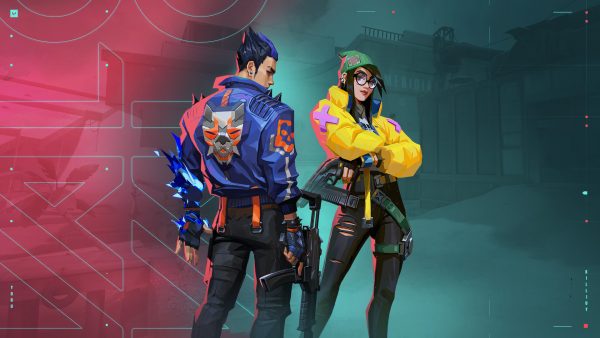

Although Valorant is free, you still need to figure out if your setup fits the bill. Can you play Valorant on a console? Unfortunately, the answer is no. But if you’re asking how to play Valorant on PC, then don’t worry. Most PCs can run Valorant, as the system requirements are quite low.
However, if you want to figure out how to play Valorant on Mac, that’s another story. While Valorant is available on PC, it’s only compatible with Windows operating systems. Additionally, if you want to learn how to play Valorant with a controller, that’s possible but is highly inadvisable.
To start your Valorant download, you first need to see if your system meets the requirements. To run Valorant, you must have at least:
- An Intel Core 2 Duo E8400 CPU
- An Intel HD 4000 GPU
- 4 GB of RAM
- Windows 7 or higher
These specs are only the bare minimum to run Valorant, though. And seeing as Valorant is a competitive shooter, it is better to have higher specs. If your FPS is too low, it may affect your ability to react to the movement of other players. Good internet is also key if you want to get good at Valorant.
How to Play Valorant: Gameplay Overview
As we’ve said before, Valorant is not like battle royale games like Apex Legends. Instead, Valorant is more similar to CS:GO. The core gameplay is divided into a round, which consists of three separate categories: agent selection, the buy phase, and the round proper.
Agent Selection
Agent selection is where you choose from the various Valorant characters who you want to play for the rest of the game. How long is a Valorant game? Well, games can easily last anywhere from 25 to 45 minutes. This makes choosing your agent integral.
Ideally, you would want to choose an agent that suits your playstyle. How do you figure out which agent is for you? Well, you’ll just have to play every agent. That’s a process anyone who has learned how to play Valorant has gone through. Agent selection lasts for roughly one minute and happens only once for the entire game.
Buy Phase
The buy phase happens once every round. This is the time that you purchase your weapon of choice for the round. It is also occasionally used for strategizing what you’re going to do along with your team. The buy phase on the first round of each half lasts 45 seconds while succeeding buy phases last 30 seconds.
Round Proper
The round proper comes right after the buy phase. This is where the action happens. Either the attackers eliminate the defenders or the opposite happens. From the buy phase to the round proper, each round can last up to around two minutes.
How to Play Valorant: Tips and Guide for Beginners
To become good at Valorant, one must first learn how to play Valorant. In this section, we highlight key terms and other things beginners need to know when they start playing. These will help you learn how to play Valorant a lot faster than others.
Key Terms
Valorant has a fairly steep learning curve when it comes to learning terms. There are so many different aspects of Valorant to learn, like how the economy works, shooting mechanics, as well as maps and agents.
This can make learning how to play Valorant quite a daunting task for beginners to the FPS genre. But don’t worry, we’ve listed some of the most common terms for you to have an easier time when you start playing.
Flank
A flank happens when one of your teammates is behind the enemy team or an enemy player is behind your team. Flanking is one of the most common occurrences in Valorant. Although it doesn’t happen every round or every game, there are players whose playstyle is to flank the enemy.
Lit
When you damage an enemy but fail to finish them off, you tell your team that they are lit. Upon telling your team that an enemy is lit, you specify who the enemy is, how much you damaged them for, and where you last saw them.
Peek
To peek means you move out of cover and face the enemy. When peeking, it is best to consider how many enemies there might be before you peek. It’s better to face enemies one by one instead of running into multiple enemies from multiple angles at once.
Frag
A frag simply refers to a kill. Consequently, whenever people say top frag in Valorant, they mean the person on your team with the most kills. Likewise, the bottom frag is the person on your team with the least kills.
Rotate
Rotating in Valorant means moving to another bomb site. If you’re on the defending side and one of your teammates asks you to rotate, it means they need help on the other site. Meanwhile, rotating for the attacking side means you’ll be retreating and attempting to attack the other site instead.
Line-up
A line-up is a utility skill where you align your positioning and crosshair to a specific location. It’s a positioning setup that uses geometry to ensure that your ability lands in a predetermined position.
Key Controls
Like in any FPS game, to move in Valorant, you use the WASD keys. But Valorant’s gameplay goes beyond just moving and shooting. Learning how to play Valorant also means that you need to be familiar with all the controls and what they do.
Every agent comes equipped with different abilities. Abilities are activated by pressing the C, Q, E, and X keys respectively. In Valorant, your character can interact with some objects. For instance, you can climb up ropes on some maps and close doors on others. You use the F key to interact with these objects.
A neat feature in Valorant is that you can ping a location by pinpointing the location with your crosshair and pressing the Z key. You can also ping locations on the minimap by holding the Caps Lock key and pressing the spot you want to ping. By pinging a location, you alert your entire team to the location. Pinging is used for strategizing or telling your team where you spotted an enemy.
Maps
Valorant is quite similar to CS:GO in the sense that it has a whole host of maps. These maps are Ascent, Bind, Split, Haven, Icebox, Breeze, and Fracture. All of these maps have two spike sites, except for Haven, which has three. Each map has its unique theme and layout. For instance, Icebox is set in an icy tundra, and Breeze is a castle near a beach.
Every map has distinctive gameplay. Bind allows players to teleport to the other side of the map with relative ease, Fracture is laid out like a maze, and Haven has three bomb sites instead of two.
Learning Callouts
Each map is segmented into different sections. These sections are what people call callouts. These callouts are used to identify where enemies are relative to your position. To properly learn how to play Valorant, you need to be able to learn the callouts of every map.
There are common callouts on every map which makes it easier for you to remember them. The simplest callouts are A site and B site, which are pretty self-explanatory. Many maps also have a callout called “heaven,” which is usually a spot where defenders can see a site easily from above. Some callouts are specific to each map, like Hookah on Bind or C site on Haven.
Agents
Valorant has four distinct agent roles. These are Duelists, Initiators, Sentinels, and Controllers. We’re going to explain what these agent roles are so you can understand what each role’s duty is.
Initiator
On the defending side, the Initiator role is designed for your team to figure out how to counter a push. On the attacking side, Initiators are used for starting a push. Initiator abilities also give you information as to where the enemy is. This information gives you an advantage since you’ll be able to plan out what you’re going to do with your team.
Examples of Initiator agents include Sova, Skye, Breach, and KAY/O. Sova has a drone that can scout out enemy territory as well as a recon dart that reveals enemy locations. Meanwhile, Skye has hawks that can blind the enemy, revealing their locations in the process. Breach can stun enemies and force them to reposition, whereas KAY/O can disable the abilities of enemy agents for a short period.
Controller
Controllers help your team to take space and control multiple points of the map at once. They usually have abilities like smokes and molotovs (also called mollies) to disrupt the enemy team. Defenders usually smoke off choke points where attackers can come from, and attackers usually smoke off where defenders could be to block their vision.
Controller agents include Omen, Viper, Brimstone, and Astra. They all have smokes that block off the enemy’s vision, and Omen has a flash that can blind a wide range of enemies. Meanwhile, Viper and Brimstone have mollies that damage the enemy when they step in its range. Astra, on the other hand, can stun enemies and pull them in another direction.
Duelist
The Duelist role is by far the most popular agent role in Valorant. Duelists mostly have abilities that allow them to either tank enemy attacks or get out of a sticky situation. When attacking, Duelists are usually at the helm of the attack, going in first after Initiators get information for them.
Duelist agents consist of Jett, Reyna, Phoenix, Raze, and Yoru. Jett, Raze, and Yoru all have abilities that help them get out of sticky situations. Meanwhile, Reyna and Phoenix can tank enemy attacks and heal themselves with their abilities.
Sentinel
Sentinels are good for holding certain positions on each map. Although they are more or less better on the defending side, their abilities can also be used to watch the flank on the attacking side.
Sentinel agents are Cypher, Killjoy, Chamber, and Sage. Cypher has tripwires that alarm your team when an enemy is caught by them as well as a camera that can watch over an area. Meanwhile, Killjoy has a turret that can watch an area as well as an alarm bot that makes enemies vulnerable. Chamber can teleport between two anchor points and use guns that are unique to him.
Sage is arguably the most beginner-friendly Sentinel out there, as her abilities are easy to use. She is often also hailed as the most useful agent, since her kit allows you to heal teammates, slow enemies, and even revive a dead teammate.
Types of Skills
Every agent is unique in terms of abilities. For instance, some agents have abilities that can be used twice in one round, while others have abilities that can only be used once per round. However, the common thing about each agent is that they have a combination of abilities. These abilities come in the form of basic, signature, and ultimate abilities.
Basic Abilities
Basic abilities are the abilities that you need to buy for every agent every round. However, if you didn’t use your basic ability in one round, you wouldn’t need to buy it in the succeeding round. Some agents have two charges for their basic abilities, and others have less. Basic abilities are activated by pressing the C and Q buttons.
Signature Abilities
An agent’s signature ability is their innate ability, which means you get it for free every round. Upon using your signature ability, there will be a condition before you can use it again in the same round. For instance, some abilities have a cooldown upon use. Meanwhile, other signature abilities require you to kill two enemies before using them again.
Ultimate Abilities
Ultimates are the strongest abilities in the game. They can change the course of a round just by being activated. Unlike other abilities, you cannot purchase your ultimate ability. Instead, ultimate abilities are earned by getting ult points. Ult points can be earned by gathering ult orbs around the map, killing enemies, dying, or planting/defusing the spike.
How the Economy in Valorant Works
As we’ve said previously, Valorant is similar to CS:GO in more ways than one. Like in CS, Valorant also has an economy. You have to buy weapons, abilities, and shields every round depending on if you died in the previous round.
We won’t go into specifics when it comes to the economy to save you some brainpower. Just know that when you win a round, you gain more money than when you lose a round. And when you win or lose multiple rounds in a row, you get more money. If you lose a round after winning a round, or vice versa, there will be significant adverse effects on your team’s money.
Pistol Round
Like in CS:GO, at the start of every game and half, there is something called the pistol round. In the pistol round, each player is only given 800 credits. This means that you won’t have enough money to buy anything except some abilities, half shields, or a better pistol. You can either choose to buy a better pistol and some abilities or go for half shields instead.
After the pistol round, you will be given an appropriate amount of credits depending on if you won or lost that round. The pistol round is crucial because it allows your team to have a good start and have a good shot at winning the game.
Buy
Buy in the context of Valorant is a bit different from how you would normally interpret it. In Valorant, buying means the economic decisions made by your team. The decision of your team’s “buy” refers to whether you want to go all out that round or save money to get a better chance of winning the next round. Various buy decisions exist.
Full-Buy
A full-buy means that you use up all your money to purchase the best weapons you can get. When you do a full buy, you usually purchase the best weapon you can get, as well as full shields and abilities.
Force Buy
Unlike a full-buy, a force buy means that even though your team can’t purchase the best weapons possible, you still use up all your money. This is a risky move because it means potentially damaging your team’s economy for the next round if you lose. You go all-in when you do a force buy.
Half-Buy
A half-buy usually happens when you have enough money to afford something, just not the most powerful weapons. You can’t afford a full-buy, but your team doesn’t want to force buy either. It’s between the full-buy and the force buy. With a half-buy, you will still have enough money for a full-buy next round.
Eco/Save
An eco or a save is a buy decision that means you save money for one round and purchase only pistols so you can buy more powerful weapons in the next round. The rationale behind an eco is that you sacrifice one round to give yourself more of a fighting chance in future rounds.
Guns
The buy system in Valorant allows you to purchase any weapon you desire, so long as you can afford it. Weapon types are similar to other FPS games since you can choose from pistols, rifles, snipers, heavy weapons, shotguns, and submachine guns (SMGs).
There is no perfect gun since most weapons are adaptable depending on your playstyle and situation. However, some guns are statistically better than others. For instance, rifles and snipers are superior to SMGs in terms of damage output. This makes them perfect for full buys. SMGs are cheap but have a decent fire rate, making them good for half-buys and force buys. On eco rounds, you would buy an upgraded pistol so you can fully buy the next round.
Valorant Practice Mode
Every top-tier shooter needs a practice mode. Apex Legends has its firing range. CS:GO has deathmatch and bots. Fortnite has a playground mode. So of course, it goes without saying that Valorant has its practice mode.
The Range
There are different ways to practice, but the definitive practice mode is called the range. The range is where you go for Valorant’s tutorial. It’s also the go-to practice place for many pro players.
At the range, you can practice shooting bots and get a feel for all the guns. There’s also a minigame where the bots appear and disappear at a certain speed. You can also adjust your sensitivity freely to see which sensitivity fits you the best.
Scenarios
The range also has scenarios where you defuse the spike or defend the spike from bots. These scenarios are especially good for people who are new to Valorant. Even pro players use these scenarios from time to time.
How to Play Valorant: Sharpening Skills
They say that if you want to get better at a game you just need to keep on playing it, but the truth is that you need a mindset for improvement. Once you know how to play Valorant, the next step is to figure out how to get better at Valorant.
Where to Practice
There are a multitude of things you can do to hone and polish your Valorant skills. For beginners who have just learned how to play Valorant, the range is the best place to practice. If you’re a beginner, you should practice the basic mechanics in the range until you’re comfortable with the shooting.
Before playing an actual Valorant game, you can opt to warm up in the range until you’re comfortable with your aim. You can also warm up your aim by playing a deathmatch or a spike rush.
If you’re serious about getting good at Valorant, then you should consider getting an aim trainer. Aim trainers like Aim Labs are good for aim practice. They even have some game modes that can help you train your Valorant mechanics specifically.
Best Way to Practice to Win Games
Practicing your aim and reaction time is probably the best thing to do if you’ve just learned how to play Valorant. However, those aren’t the only things that are important to improve in Valorant. You have to get good at other mechanics of the game as well. With that being said, here are some tips for you to improve at Valorant.
Listen to Footsteps
Sound is an important part of Valorant. You need to be able to listen to footsteps to find out how many enemies are moving to figure out an effective way to counter them. On the attacking side, listening to footsteps is especially important because footsteps can tell you if an enemy is rotating to a site.
Work on Communication
Valorant is a team game, so communication is an integral part of the game. You need to be a good teammate that can give your team crucial information to win the round. Being a good communicator is an essential part of what makes pro players so good.
To be an effective communicator in Valorant, you need to deliver as much information as possible. While doing this, you also want to make sure you’re not saying too much so that your team can stay focused.
Learn How to Pre-Aim
Pre-aim is a term that is commonly used to refer to the positioning of your crosshair. You’ll need to get used to positioning your cursor in spots where you think the enemy might be. Adjust your crosshair to always stay at head height of where you think your enemy could show up.
Valorant Ranked Gameplay
Like every popular FPS game, Valorant has a competitive mode. In this section, we detail how to play competitive Valorant and the ranking system that Riot Games has created.
How Many Games Required to Access Ranked
If you’re thinking about how to play ranked Valorant, then all you need to do is play more unrated games to unlock the ranked mode. Since you need to play more, you may be wondering how many games to play ranked Valorant.
The magic number is 20 games. You need to play 20 games of unrated to unlock competitive mode. And even once you’ve unlocked competitive, you’ll still need to play five games to get your first Valorant rank.
Ranked Medals and Tiers
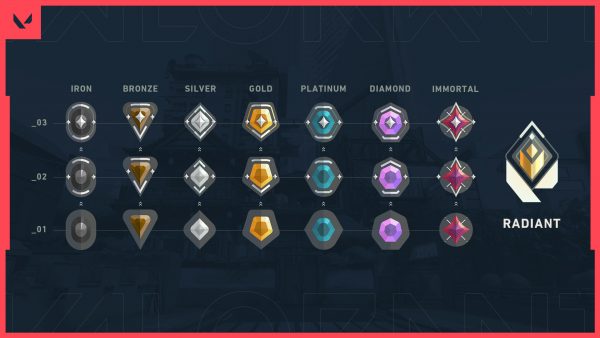

Valorant has quite a lot of ranks and tiers. Each rank has three tiers, with the tiers going from 1 to 3. The lowest Rank is Iron 1, and the highest rank is Radiant. Like we’ve said before, you need to play five competitive games to unlock your first rank.
To rank up in Valorant, you need to get your total rank rating (otherwise known as RR) to 100. Every match that you win can get you anywhere from 10 to 50 RR. Meanwhile, losses can make you lose up to 30 RR. When you are at 0 RR for your rank, you need to lose another match before you are demoted. Of course, if you’re at Iron 1, you can’t get demoted.
Good Luck, Have Fun in Valorant!
The key to Valorant is all about keeping a positive mindset and striving to improve. Most of the fun that you’ll be having in Valorant is playing with friends and improving. Now that you’ve learned how to play Valorant, go out there and have some fun.







